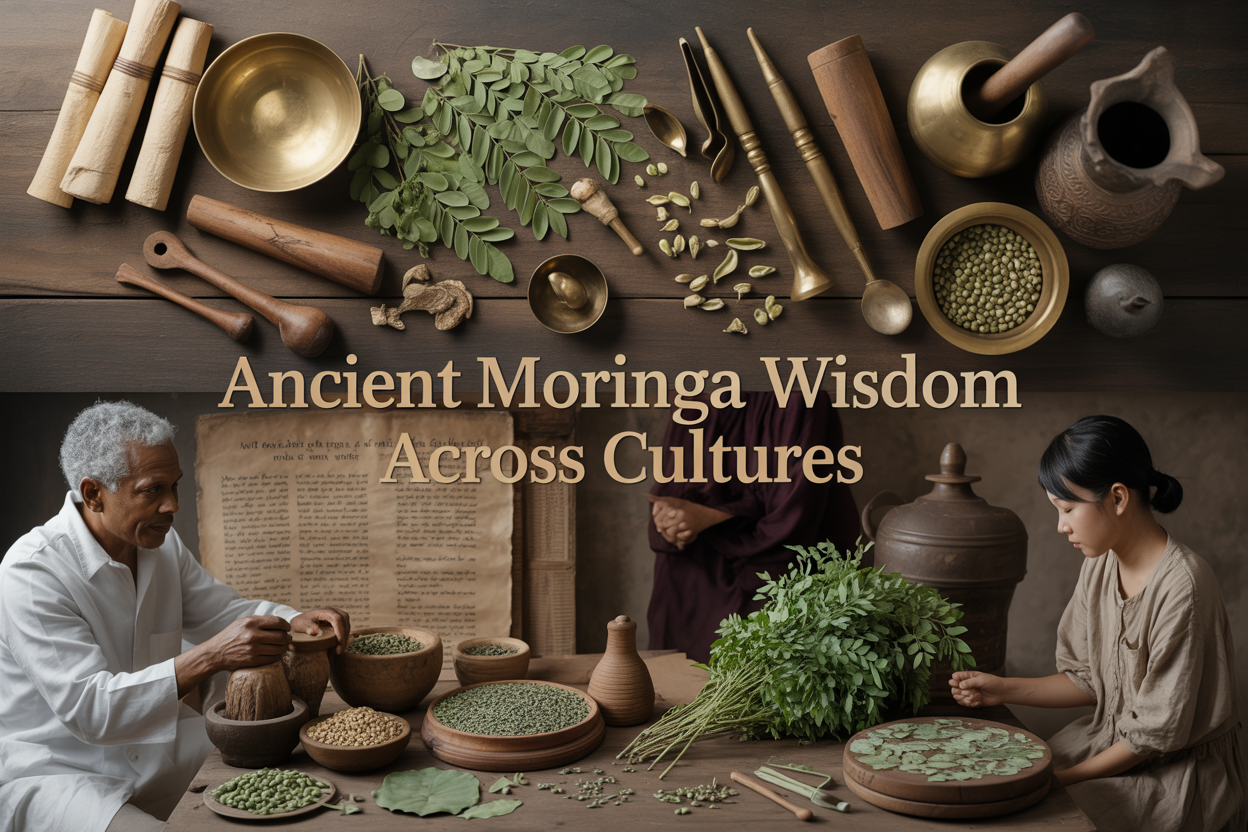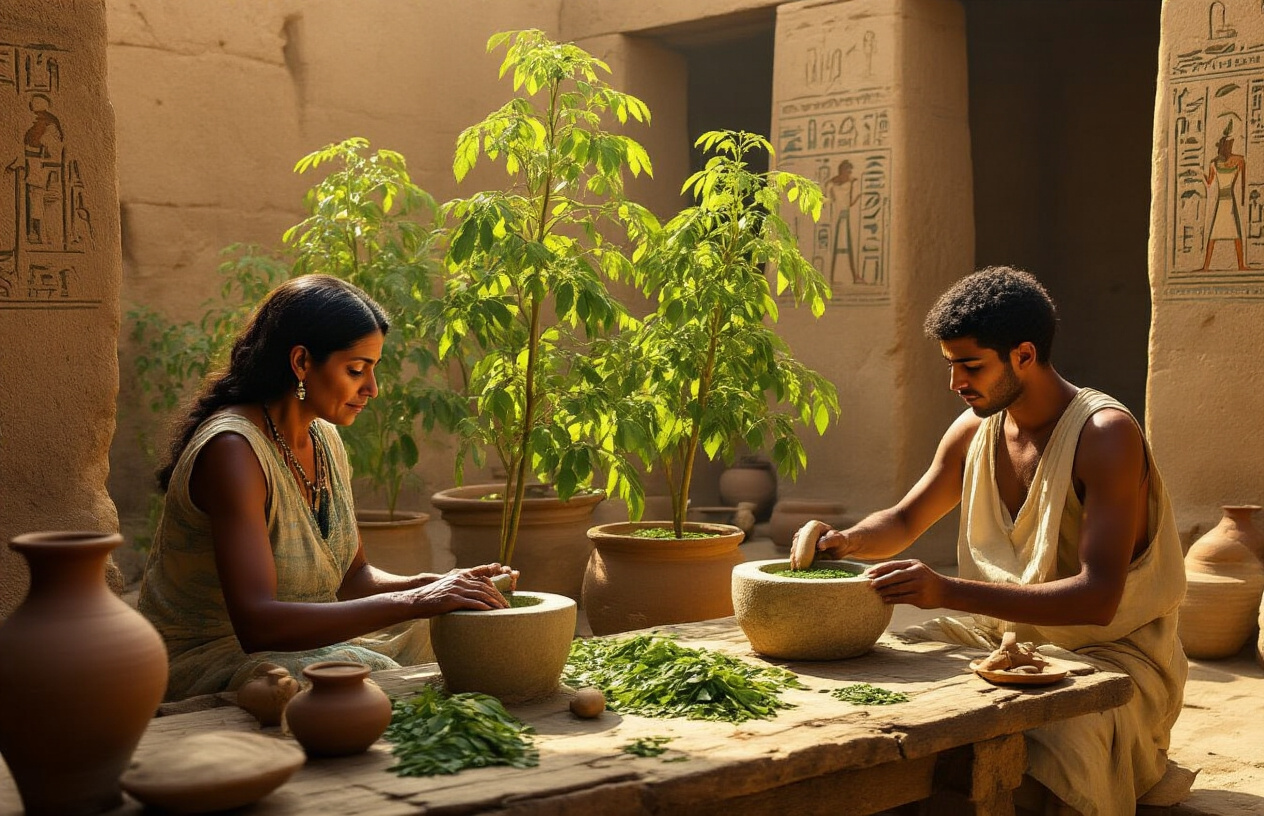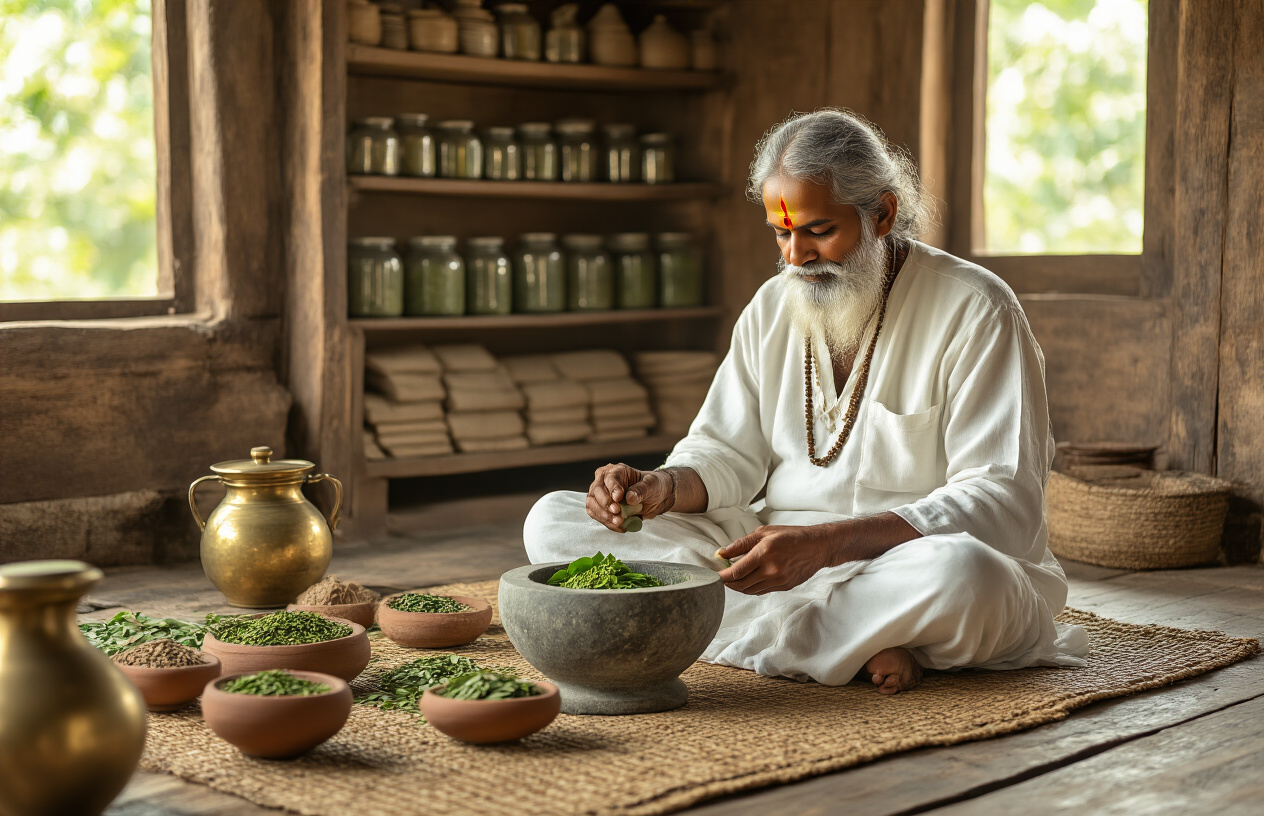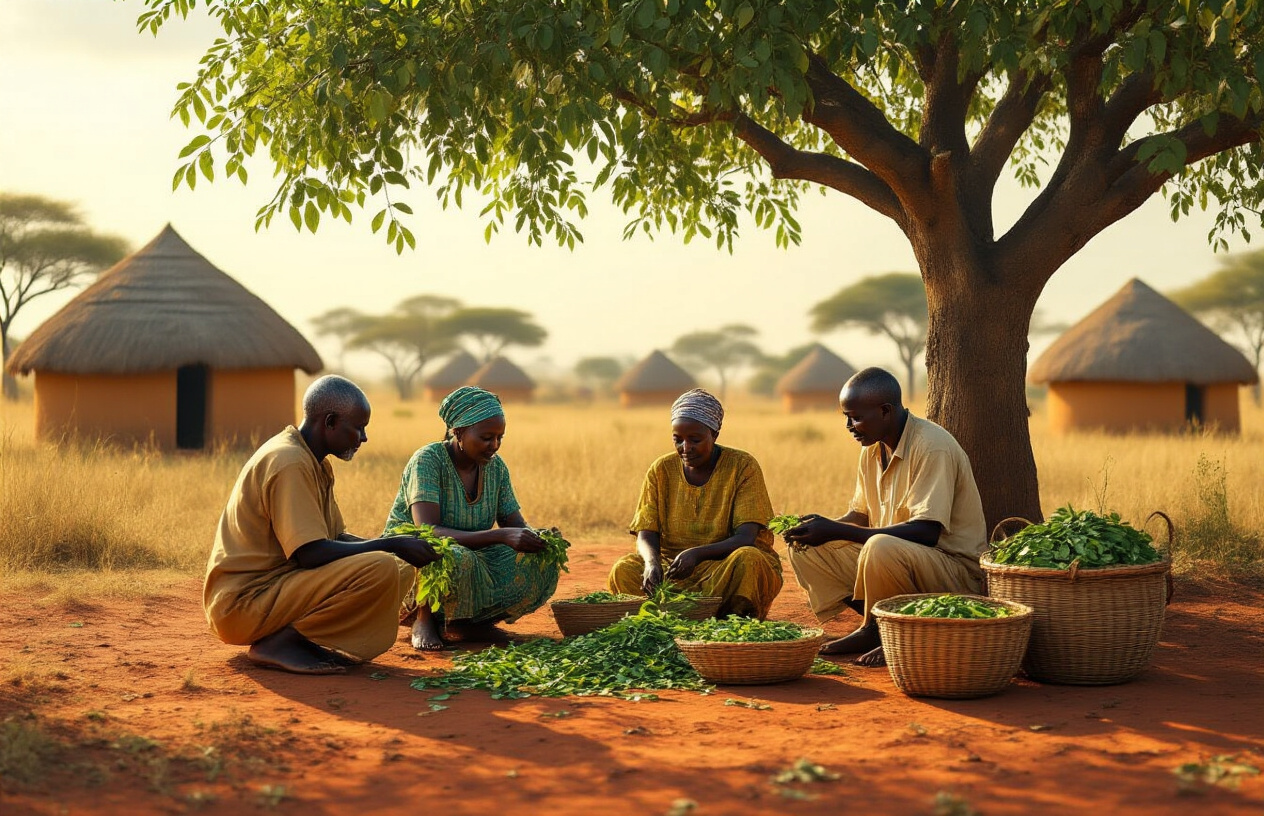
You’ve probably heard about moringa as the latest superfood trend, but this “miracle tree” has been quietly healing people for thousands of years. If you’re curious about how ancient cultures discovered and used moringa long before modern science caught on, you’re in for a fascinating journey through time.
This exploration of historical moringa uses across different cultures is perfect for health enthusiasts, history buffs, and anyone interested in traditional medicine practices. You’ll discover how our ancestors tapped into moringa’s incredible potential using nothing but observation and generations of passed-down wisdom.
We’ll take you through ancient Egyptian moringa practices that treated everything from infections to joint pain, showing you how pharaohs and common people alike relied on this powerful plant. You’ll also explore traditional Indian ayurvedic applications where moringa earned its place as a cornerstone of holistic healing, treating over 300 different ailments according to ancient texts.
Finally, we’ll uncover the deep moringa wisdom of African indigenous communities, where the tree originated and where traditional knowledge runs deepest. These time-tested approaches offer valuable insights that modern research is only now beginning to validate, connecting ancient wisdom with today’s scientific understanding of moringa’s remarkable benefits.
Ancient Egyptian Moringa Practices and Their Health Benefits

Sacred tree cultivation along the Nile River for medicinal purposes
You’ll find ancient Egyptian records showing that moringa trees were carefully cultivated along the fertile banks of the Nile River over 4,000 years ago. Egyptian farmers recognized these trees as nature’s pharmacy, growing them specifically for their remarkable healing properties. The Nile’s nutrient-rich soil provided perfect growing conditions, allowing these ancient Egyptian moringa trees to flourish and develop potent concentrations of beneficial compounds.
Your ancestors in ancient Egypt understood what modern science now confirms – every part of the moringa tree offers therapeutic value. They harvested leaves during specific lunar cycles to maximize their nutritional content, believing this timing enhanced the plant’s healing power. Egyptian papyrus scrolls describe detailed cultivation methods, including optimal spacing between trees and irrigation techniques that maximized medicinal potency.
The sacred nature of these trees meant you would have found them growing near temples and healing centers, where priest-physicians carefully tended to them. These traditional moringa benefits were so valued that Egyptian rulers established royal gardens dedicated exclusively to moringa cultivation, ensuring a steady supply for medicinal purposes.
Moringa oil extraction methods for mummification and skincare
Your understanding of ancient Egyptian beauty secrets wouldn’t be complete without knowing about their sophisticated moringa oil extraction techniques. Egyptian embalmers discovered that moringa seed oil possessed remarkable preservative qualities, making it essential for their mummification processes. They developed a cold-pressing method using stone mills that extracted pure, golden oil without damaging its beneficial properties.
You would have witnessed Egyptian women using this precious oil as their primary skincare treatment. The oil’s natural antimicrobial and anti-inflammatory properties made it perfect for protecting skin against the harsh desert climate. Wealthy Egyptian ladies applied moringa oil daily, mixing it with aromatic herbs to create luxurious beauty treatments that kept their skin youthful and radiant.
The extraction process required patience and skill. Egyptian artisans would sun-dry the seeds for weeks, then crack them carefully to avoid bitter compounds from the hulls. They pressed small batches at a time, storing the oil in alabaster jars to preserve its potency. This historical moringa oil was so valuable that it often served as currency in trade negotiations.
Royal court usage for treating digestive ailments and infections
Egyptian royalty relied heavily on moringa’s therapeutic properties to maintain their health and vitality. You’ll discover that pharaohs and their families consumed moringa leaf preparations daily to prevent digestive problems and boost their immune systems. Court physicians created specific formulations for different ailments, mixing moringa with honey and other healing ingredients.
Royal medical papyri document how Egyptian doctors used moringa to treat everything from stomach ulcers to respiratory infections. They prepared concentrated teas from the leaves for digestive issues and created poultices from ground seeds to treat skin infections and wounds. The traditional moringa benefits were so trusted that pharaohs took moringa preparations with them into their tombs, believing they would need these healing properties in the afterlife.
Your royal ancestors also used moringa bark preparations to treat fever and inflammation. Court physicians developed detailed protocols for different concentrations, adjusting dosages based on the patient’s age, condition, and status. These moringa uses were considered so effective that Egyptian medical knowledge influenced healing practices throughout the Mediterranean region.
Integration into religious ceremonies and temple healing rituals
You would have found moringa deeply woven into Egyptian spiritual and healing practices. Temple priests burned moringa leaves as sacred incense during healing ceremonies, believing the smoke carried prayers to the gods while purifying the air of harmful spirits. These moringa cultural practices connected physical healing with spiritual wellness, creating holistic treatment approaches that addressed both body and soul.
Egyptian healing temples featured dedicated moringa groves where patients would rest during their recovery. Priests prepared ceremonial drinks from moringa leaves, blessing them during sunrise rituals before administering them to the sick. They believed moringa’s life-giving properties were enhanced when blessed by divine energy, making the treatments more powerful.
Your spiritual ancestors also incorporated moringa into funeral rites, placing fresh leaves in burial chambers to ensure safe passage to the afterlife. Temple walls feature hieroglyphic depictions of moringa trees alongside other sacred symbols, showing how deeply this ancient Egyptian moringa was integrated into their religious worldview. These practices influenced neighboring cultures, spreading moringa’s reputation as a sacred healing plant throughout the ancient world.
Traditional Indian Ayurvedic Applications of Moringa

Drumstick Tree Remedies for Balancing Body Doshas
In moringa ayurveda practices, you’ll discover that ancient healers recognized the drumstick tree’s remarkable ability to harmonize your body’s three doshas – Vata, Pitta, and Kapha. Your ancestors understood that moringa uses extended far beyond basic nutrition, viewing this sacred tree as a powerful dosha balancer.
When your Vata dosha feels out of balance, causing anxiety, dry skin, or digestive issues, traditional practitioners would recommend moringa leaf powder mixed with warm ghee. This combination grounds your nervous system and nourishes your tissues from within. For excess Pitta creating inflammation, anger, or skin problems, you’d benefit from fresh moringa leaves prepared as a cooling juice or paste.
Your Kapha imbalances, manifesting as sluggish digestion, weight gain, or respiratory congestion, respond beautifully to moringa’s heating properties. Ancient texts describe specific preparations where you’d consume moringa seeds with warming spices like ginger and black pepper to ignite your digestive fire.
Leaf Preparations for Treating Diabetes and Inflammation
Your traditional healers developed sophisticated moringa traditional medicine protocols using leaves to manage what we now call diabetes. They observed that regular consumption of moringa leaf powder helped stabilize blood sugar levels naturally. You’d typically take one teaspoon of dried leaf powder with water before meals, a practice that modern science validates through research on moringa’s hypoglycemic compounds.
For inflammatory conditions affecting your joints, skin, or digestive system, ancient preparations involved creating poultices from fresh moringa leaves. You’d crush the leaves into a paste, sometimes adding turmeric or neem, then apply directly to inflamed areas. Internal anti-inflammatory treatments included moringa leaf tea consumed twice daily.
| Traditional Preparation | Modern Equivalent | Primary Benefit |
|---|---|---|
| Fresh leaf juice | Moringa powder smoothies | Blood sugar control |
| Leaf poultice | Topical moringa creams | Reduced inflammation |
| Decoction tea | Standardized leaf extracts | Antioxidant support |
Seed-Based Treatments for Water Purification and Kidney Health
Your ancestors discovered something remarkable about moringa seeds – they could transform contaminated water into safe drinking water. This historical moringa application involved crushing mature seeds and stirring the powder into muddy or bacteria-laden water. The natural coagulants in moringa seeds would bind to impurities, causing them to settle at the bottom.
For your kidney health, traditional practitioners created specific seed preparations. You’d consume 2-3 moringa seeds daily, either raw or ground into powder, to support kidney function and reduce water retention. The seeds’ diuretic properties helped your body eliminate toxins while providing essential nutrients.
Kidney stone prevention involved soaking moringa seeds overnight, then drinking the infused water first thing in the morning. This gentle treatment supported your urinary system’s natural cleansing processes without harsh side effects.
Root Applications for Respiratory Disorders and Joint Pain
The moringa root held special significance in moringa ayurveda treatments, though modern practitioners use it more cautiously due to its potency. Your traditional healers would carefully prepare root decoctions for severe respiratory conditions like asthma, bronchitis, and persistent coughs.
For your joint pain and arthritis, they’d create warming oils by slow-cooking moringa root pieces in sesame or mustard oil. You’d massage this preparation into affected joints, experiencing relief from inflammation and stiffness. The root’s natural compounds penetrate deep into your tissues, providing long-lasting comfort.
Respiratory treatments involved creating steam inhalations using moringa root bark. You’d breathe in the medicated vapors to clear congestion and soothe inflamed airways. These traditional moringa benefits demonstrate the sophisticated understanding your ancestors had of plant medicine’s therapeutic applications.
African Indigenous Communities and Moringa Wisdom

Nutritional Supplementation During Drought Seasons and Food Scarcity
When you look at how African communities have survived countless droughts and famines throughout history, you’ll discover that moringa played a crucial role as their nutritional lifeline. Your ancestors in regions across sub-Saharan Africa understood something that modern science only recently confirmed – moringa leaves contain more vitamin C than oranges, more calcium than milk, and more protein than eggs.
During the harshest dry seasons, when traditional crops failed and livestock struggled to survive, you would have turned to the hardy moringa tree. Unlike other plants that withered under extreme conditions, moringa thrived with minimal water, making it your community’s insurance policy against starvation. Your elders knew exactly when to harvest the leaves at their peak nutritional content, often grinding them into powder that could be stored for months.
You’ll find that different African communities developed unique preservation methods. Some would dry the leaves on woven mats under shade, while others created special storage containers from gourds and clay pots. Your traditional knowledge included mixing moringa powder with local grains to create nutrient-dense porridges that could sustain entire families through difficult periods. This african moringa wisdom wasn’t just about survival – it was about maintaining health and strength when other food sources became scarce.
Traditional Healing Practices Using Bark and Flowers for Infections
Your traditional healers possessed deep knowledge about using different parts of the moringa tree for treating various infections and ailments. The bark, which you would carefully strip from mature trees during specific moon phases, contained powerful antimicrobial compounds that your ancestors used long before antibiotics existed.
When you needed to treat skin infections, wounds, or cuts, your healers would prepare poultices from moringa bark mixed with other local plants. They understood that the timing of harvest mattered – bark collected during the dry season proved more potent than that gathered during rainy months. Your traditional medicine practitioners would boil the bark to create concentrated decoctions for treating internal infections, digestive problems, and respiratory issues.
The delicate moringa flowers held special significance in your healing traditions. You would gather these small, cream-colored blooms at dawn when their medicinal properties peaked. Your healers used flower infusions to treat urinary tract infections, kidney problems, and to support women during childbirth. They knew how to combine moringa flowers with honey and other local ingredients to create remedies that were both effective and palatable.
Your traditional healing practices also included using moringa seeds for water purification. When your community faced contaminated water sources, you would crush the seeds and use them to clarify murky water, removing harmful bacteria and particles. This practice saved countless lives and demonstrated your ancestors’ sophisticated understanding of natural water treatment methods.
Community-Based Cultivation Methods Passed Through Generations
Your ancestral communities developed intricate systems for growing and maintaining moringa trees that ensured every family had access to this vital resource. These weren’t random plantings – your elders planned moringa groves with the same care they gave to their most precious crops, understanding that these trees represented long-term food security for future generations.
You would have learned cultivation techniques through hands-on experience, working alongside your grandparents and parents from a young age. Your community practiced companion planting, growing moringa alongside other traditional crops in ways that maximized soil fertility and protected against pests. They understood which plants thrived together and which combinations provided the best nutrition for both the soil and the people.
Your traditional cultivation methods included specific rituals and timing practices. Planting often coincided with seasonal festivals and lunar cycles, reflecting your deep connection between agriculture and spiritual beliefs. You would select seeds from the healthiest, most productive trees, ensuring genetic diversity within your community’s moringa population. Your elders taught you to recognize the signs of healthy soil and optimal growing conditions.
Water management formed a critical part of your moringa cultural practices. Your communities developed ingenious irrigation systems using clay pots, channels, and natural rainwater collection methods. You learned to mulch around young trees with organic matter, creating microclimates that conserved moisture and protected roots during extreme weather. These sustainable practices ensured your moringa trees could survive and produce for decades, providing food security that lasted through multiple generations.
